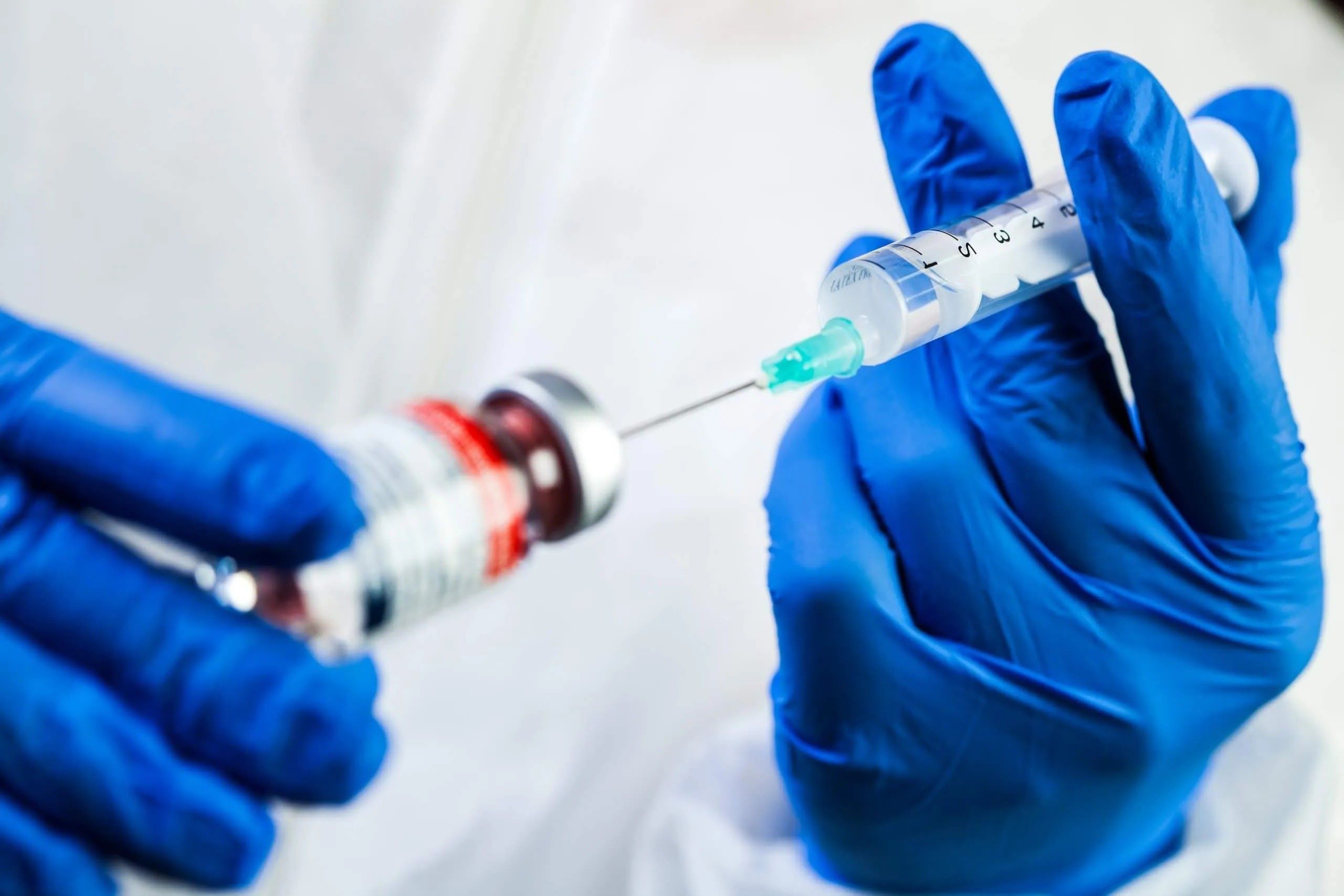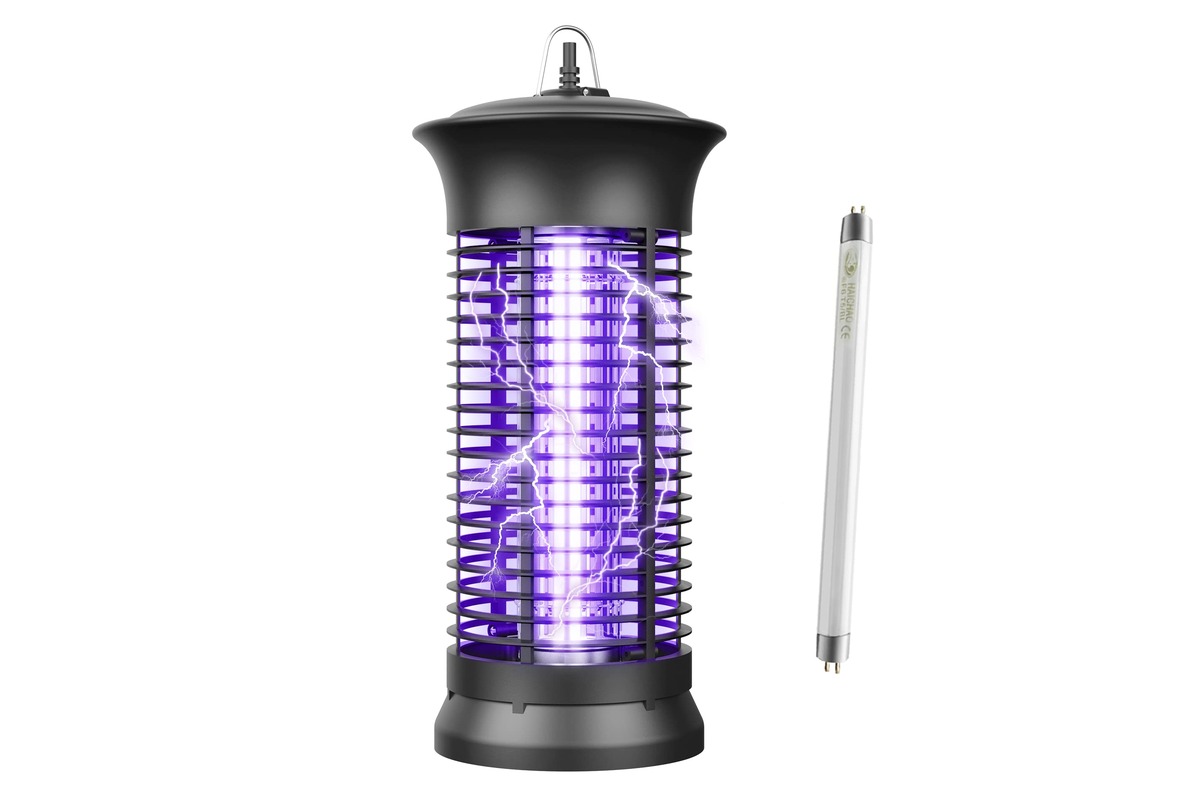Home>Health and Wellness>How To Give B12 Injection


Health and Wellness
How To Give B12 Injection
Published: March 3, 2024
Learn the proper technique for administering a B12 injection for improved health and wellness. Discover step-by-step instructions and tips for a successful injection.
(Many of the links in this article redirect to a specific reviewed product. Your purchase of these products through affiliate links helps to generate commission for Noodls.com, at no extra cost. Learn more)
Table of Contents
Introduction
Welcome to our comprehensive guide on how to give a B12 injection. Whether you're a healthcare professional, a caregiver, or an individual seeking to self-administer B12 injections, this article will provide you with the essential knowledge and step-by-step instructions to ensure a safe and effective administration process.
Vitamin B12, also known as cobalamin, is a crucial nutrient that plays a pivotal role in maintaining the health of our nervous system, supporting the formation of red blood cells, and aiding in the metabolism of fats and carbohydrates. However, some individuals may experience a deficiency in this essential vitamin due to factors such as dietary restrictions, malabsorption issues, or certain medical conditions.
In cases of B12 deficiency, supplementation through injections can be a highly effective method to ensure that the body receives an adequate amount of this vital nutrient. By understanding the proper techniques for administering B12 injections, you can help alleviate symptoms associated with B12 deficiency, such as fatigue, weakness, and neurological complications.
Throughout this guide, we will delve into the details of B12 deficiency, the necessary preparations for administering injections, the selection of appropriate injection sites, the step-by-step process of administering the injection, and the crucial aftercare and monitoring procedures.
Whether you are a healthcare professional seeking to enhance your knowledge and skills in administering B12 injections or an individual looking to gain a comprehensive understanding of this process, this guide is designed to equip you with the expertise and confidence needed to carry out B12 injections effectively and safely. Let's embark on this journey to empower ourselves with the knowledge and skills to address B12 deficiency through proper injection administration.
Understanding B12 Deficiency
Vitamin B12, an essential water-soluble vitamin, is crucial for various bodily functions, including the formation of red blood cells, neurological health, and DNA synthesis. Despite its significance, many individuals experience B12 deficiency, which can lead to a range of health issues. Understanding the causes, symptoms, and consequences of B12 deficiency is pivotal in recognizing and addressing this condition effectively.
Causes of B12 Deficiency
B12 deficiency can arise from various factors, with dietary insufficiency being a common cause. Individuals following strict vegetarian or vegan diets may have limited access to B12 food sources, as this vitamin is primarily found in animal products such as meat, fish, eggs, and dairy. Additionally, malabsorption conditions, such as pernicious anemia, celiac disease, or gastrointestinal surgeries, can hinder the body's ability to absorb B12 from ingested food or oral supplements.
Symptoms of B12 Deficiency
The symptoms of B12 deficiency can manifest gradually and vary in severity. Common signs include fatigue, weakness, lightheadedness, and shortness of breath. Neurological symptoms, such as numbness or tingling in the hands and feet, difficulty walking, and cognitive impairments, may also occur. Furthermore, untreated B12 deficiency can lead to megaloblastic anemia, characterized by the production of abnormally large and immature red blood cells, resulting in reduced oxygen-carrying capacity.
Consequences of Untreated B12 Deficiency
If left unaddressed, B12 deficiency can lead to severe and long-term health complications. Neurological damage, including irreversible nerve damage and cognitive impairments, may occur. Prolonged B12 deficiency can also increase the risk of cardiovascular problems and negatively impact overall well-being and quality of life.
Importance of B12 Injections
In cases of severe B12 deficiency or conditions that hinder B12 absorption, such as pernicious anemia, B12 injections are often recommended to ensure adequate vitamin levels. Unlike oral supplements, B12 injections bypass the digestive system, allowing for direct absorption into the bloodstream, making them an effective treatment for addressing deficiency-related symptoms and preventing long-term complications.
By understanding the intricacies of B12 deficiency, including its causes, symptoms, and potential consequences, individuals and healthcare professionals can recognize the importance of timely intervention and appropriate treatment methods, such as B12 injections, to address this prevalent health concern.
Preparing for the Injection
Before administering a B12 injection, thorough preparation is essential to ensure a safe and effective procedure. Whether you are a healthcare professional or an individual self-administering the injection, the following steps will guide you through the necessary preparations.
Gather the Supplies
The first step in preparing for a B12 injection is to gather all the necessary supplies. These typically include:
- A vial of B12 solution
- Syringe and needle
- Alcohol swabs
- Sterile gauze or cotton balls
- Sharps container for safe disposal of used needles
Ensuring that all supplies are readily available and within reach will streamline the injection process and minimize the risk of contamination or errors.
Check the Expiry Dates
Before proceeding with the injection, it is crucial to check the expiry dates of the B12 vial, syringe, and needle. Using expired or compromised supplies can compromise the sterility and effectiveness of the injection, potentially leading to adverse outcomes. Discard any expired or damaged items and replace them with fresh, unexpired supplies.
Prepare the Injection Site
The next step involves preparing the injection site. Common injection sites for B12 injections include the deltoid muscle of the upper arm and the outer portion of the thigh. To prepare the site:
- Clean the area with an alcohol swab to disinfect the skin and minimize the risk of infection.
- Allow the skin to air dry or gently pat it dry with sterile gauze to ensure a clean and dry surface for the injection.
Draw the B12 Solution into the Syringe
Carefully draw the appropriate dosage of B12 solution into the syringe, following the instructions provided by the healthcare provider or as indicated on the prescription. Ensure that the syringe is held upright and any air bubbles are removed from the solution to achieve an accurate dosage.
Recap and Recap the Needle
Once the B12 solution is drawn into the syringe, securely recap the needle to prevent contamination or accidental needle sticks. Properly recapping the needle also ensures safe handling and disposal of the syringe after the injection.
By meticulously preparing for the B12 injection, individuals can set the stage for a smooth and successful administration process. Attention to detail, adherence to sterile techniques, and the use of high-quality supplies are fundamental in ensuring the safety and efficacy of B12 injections.
Choosing the Injection Site
Selecting the appropriate injection site is a critical aspect of administering a B12 injection. The choice of site can impact the absorption rate of the injected solution and contribute to the overall comfort and safety of the individual receiving the injection. When determining the injection site for a B12 injection, healthcare professionals and individuals should consider factors such as accessibility, muscle mass, and patient preference.
Read more: How To Turn Off Flashlight On IPhone 12
Deltoid Muscle
The deltoid muscle, located in the upper arm, is a commonly utilized site for administering B12 injections. This site offers accessibility and is often preferred for self-administration due to its visibility and ease of access. When using the deltoid muscle as the injection site, it is essential to identify the correct anatomical landmarks to ensure accurate placement of the needle. The injection should be administered into the thickest portion of the deltoid muscle, located about three finger-widths below the acromion process.
Thigh Muscle
Another viable option for B12 injections is the outer portion of the thigh. This site provides a larger muscle mass compared to the deltoid, which can be advantageous for individuals requiring frequent injections or those with limited deltoid muscle development. When using the thigh as the injection site, the vastus lateralis muscle, located on the outer aspect of the thigh, is the preferred target area. This location offers a generous muscle mass and is relatively easy to access, making it suitable for both healthcare professionals and individuals self-administering injections.
Considerations for Patient Comfort
In addition to anatomical considerations, patient comfort and preference play a significant role in choosing the injection site. Some individuals may have a preference for a specific site based on their prior experiences or comfort level with self-administration. Healthcare providers should engage in open communication with patients to address any concerns or preferences regarding the injection site, ensuring a patient-centered approach to care.
Rotational Practices
To prevent tissue damage and ensure consistent absorption, it is advisable to rotate injection sites regularly. Rotational practices involve alternating between the deltoid muscles of both arms and the outer thighs for subsequent injections. This approach helps distribute the injection-related stress across different muscle groups and minimizes the risk of localized tissue irritation or discomfort.
By carefully considering the anatomical, comfort, and rotational aspects of choosing the injection site, healthcare professionals and individuals can optimize the administration process, promote patient comfort, and contribute to the overall effectiveness of B12 injections.
Read more: The Meaning Behind “Something’s Gotta Give”
Administering the Injection
Administering a B12 injection involves a precise and methodical approach to ensure the safe and effective delivery of the vitamin solution. Whether performed by a healthcare professional or self-administered under appropriate guidance, the following steps outline the process of administering a B12 injection.
-
Positioning and Preparation: Begin by ensuring that the individual receiving the injection is comfortably positioned, allowing easy access to the chosen injection site. If administering the injection to oneself, a mirror or assistance from a caregiver may be helpful to ensure proper positioning and visibility of the injection site.
-
Skin Disinfection: Prior to the injection, cleanse the selected injection site with an alcohol swab in a circular motion, starting from the center and moving outward. This disinfection process helps minimize the risk of introducing bacteria or other contaminants into the injection site.
-
Needle Insertion: With a swift and confident motion, insert the needle into the prepared injection site at a 90-degree angle, ensuring that the entire needle length is properly inserted into the muscle tissue. Maintaining steady hand control and a swift insertion minimizes discomfort and facilitates accurate delivery of the B12 solution.
-
Aspiration and Injection: Once the needle is in place, gently pull back on the plunger of the syringe to check for the presence of blood. This step, known as aspiration, helps verify that the needle tip is not positioned within a blood vessel. If blood is aspirated, the needle should be repositioned, and the aspiration process repeated until no blood is observed. Following a negative aspiration, slowly and steadily inject the B12 solution into the muscle tissue.
-
Needle Removal and Disposal: Upon completing the injection, withdraw the needle swiftly and steadily, applying gentle pressure to the injection site with a sterile gauze or cotton ball. Proper disposal of the used needle and syringe into a designated sharps container is essential to prevent accidental needle sticks and ensure safe disposal of medical waste.
-
Post-Injection Care: After the injection, it is important to provide post-injection care, including gentle massaging of the injection site to facilitate dispersion of the injected solution and minimize discomfort. Additionally, proper documentation of the injection, including the date, time, dosage, and injection site, is crucial for accurate record-keeping and monitoring of the injection schedule.
By meticulously following these steps and adhering to best practices for injection administration, healthcare professionals and individuals can ensure the safe and effective delivery of B12 injections, contributing to improved patient outcomes and overall well-being.
Aftercare and Monitoring
After administering a B12 injection, diligent aftercare and ongoing monitoring are essential to ensure the well-being of the individual receiving the injection and to track the effectiveness of the treatment. The following guidelines outline the crucial aspects of aftercare and monitoring following a B12 injection.
Post-Injection Observations
Following the administration of a B12 injection, it is important to observe the individual for any immediate adverse reactions or discomfort at the injection site. Common post-injection observations include assessing for signs of localized redness, swelling, or tenderness at the injection site. Additionally, monitoring for any unexpected systemic reactions, such as dizziness, shortness of breath, or allergic symptoms, is imperative to address any potential complications promptly.
Activity and Rest
After receiving a B12 injection, individuals are advised to engage in normal daily activities while avoiding strenuous physical exertion at the injection site. Adequate rest and relaxation can support the body's natural healing process and minimize discomfort associated with the injection. It is essential to provide clear guidance on activity restrictions and encourage individuals to communicate any concerns or unusual symptoms following the injection.
Read more: The 12 Dwarfs: Unveiling Their Epic Names!
Hydration and Nutrition
Proper hydration and nutrition play a significant role in supporting the body's utilization of the injected B12 solution. Encouraging individuals to maintain adequate fluid intake and consume a balanced diet rich in B12-containing foods, such as lean meats, fish, dairy products, and fortified cereals, can complement the effects of the injection and support overall health and well-being.
Follow-Up and Monitoring
Establishing a structured follow-up schedule for individuals receiving B12 injections is crucial for ongoing monitoring and assessment of treatment outcomes. Healthcare professionals should coordinate regular follow-up appointments to evaluate the individual's response to the injections, monitor B12 levels, and assess any changes in symptoms associated with B12 deficiency. Through consistent monitoring, adjustments to the injection schedule or dosage can be made as needed to optimize the therapeutic benefits of B12 supplementation.
Symptom Tracking and Communication
Encouraging individuals to track and report any changes in symptoms related to B12 deficiency is vital for comprehensive monitoring. Symptoms such as fatigue, weakness, neurological manifestations, and signs of anemia should be documented and communicated to healthcare providers during follow-up appointments. Open communication between individuals and healthcare professionals fosters a collaborative approach to managing B12 deficiency and ensures timely intervention when necessary.
Long-Term Management
For individuals requiring ongoing B12 injections, establishing a long-term management plan is essential to address the chronic nature of B12 deficiency. This includes developing a sustainable injection schedule, educating individuals on self-administration techniques if applicable, and providing continuous support and guidance to promote adherence to the treatment plan. Long-term management aims to optimize B12 levels, alleviate symptoms, and enhance the individual's overall quality of life.
By prioritizing comprehensive aftercare and diligent monitoring, healthcare professionals and individuals can maximize the benefits of B12 injections, promote patient safety, and facilitate the effective management of B12 deficiency. These proactive measures contribute to the holistic care and well-being of individuals receiving B12 injections, ensuring a proactive and patient-centered approach to treatment and ongoing support.










